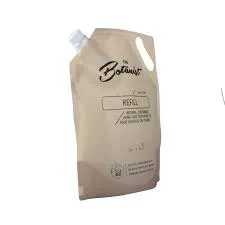- Afrikaans
- Albanian
- Amharic
- Arabic
- Armenian
- Azerbaijani
- Basque
- Belarusian
- Bengali
- Bosnian
- Bulgarian
- Catalan
- Cebuano
- chinese_simplified
- chinese_traditional
- Corsican
- Croatian
- Czech
- Danish
- Dutch
- English
- Esperanto
- Estonian
- Finnish
- French
- Frisian
- Galician
- Georgian
- German
- Greek
- Gujarati
- haitian_creole
- hausa
- hawaiian
- Hebrew
- Hindi
- Miao
- Hungarian
- Icelandic
- igbo
- Indonesian
- irish
- Italian
- Japanese
- Javanese
- Kannada
- kazakh
- Khmer
- Rwandese
- Korean
- Kurdish
- Kyrgyz
- Lao
- Latin
- Latvian
- Lithuanian
- Luxembourgish
- Macedonian
- Malgashi
- Malay
- Malayalam
- Maltese
- Maori
- Marathi
- Mongolian
- Myanmar
- Nepali
- Norwegian
- Norwegian
- Occitan
- Pashto
- Persian
- Polish
- Portuguese
- Punjabi
- Romanian
- Russian
- Samoan
- scottish-gaelic
- Serbian
- Sesotho
- Shona
- Sindhi
- Sinhala
- Slovak
- Slovenian
- Somali
- Spanish
- Sundanese
- Swahili
- Swedish
- Tagalog
- Tajik
- Tamil
- Tatar
- Telugu
- Thai
- Turkish
- Turkmen
- Ukrainian
- Urdu
- Uighur
- Uzbek
- Vietnamese
- Welsh
- Bantu
- Yiddish
- Yoruba
- Zulu
what is corrugated fiberboard
Understanding Corrugated Fiberboard A Versatile Packaging Solution
Corrugated fiberboard is a widely used material in packaging and shipping, known for its excellent strength-to-weight ratio and durability. It is primarily composed of three layers an inner liner, a corrugated medium (also known as a fluted layer), and an outer liner. This unique structure gives corrugated fiberboard its characteristic properties, making it an ideal solution for various applications.
Composition and Structure
To fully understand corrugated fiberboard, it is important to look at its structural components. The outer and inner liners are made from flat paper sheets, while the corrugated medium is a wavy, flute-like layer bonded between them. The fluting provides rigidity and strength, allowing the material to withstand heavy loads and protect the contents inside.
The types of flutes can vary, and each type offers different benefits. Common flute types include A-flute, B-flute, C-flute, E-flute, and F-flute, with variations in thickness and spacing. A-flute, the thickest type, provides excellent cushioning and is commonly used for shipping fragile items. B-flute, with a thinner profile, is often used for retail packaging and displays due to its smooth surface and ability to prevent bulging.
Advantages of Corrugated Fiberboard
1. Strength and Durability One of the standout features of corrugated fiberboard is its strength. It can support a considerable amount of weight without bending or breaking, making it perfect for heavy-duty shipping.
2. Lightweight Despite its robustness, corrugated fiberboard is lightweight, which helps reduce shipping costs. This characteristic makes it a favored option for businesses seeking to minimize expenses and reduce their carbon footprint.
3. Cost-Effective Corrugated fiberboard is relatively inexpensive compared to other packaging materials. This affordability allows businesses of all sizes to utilize it for their packaging needs without straining their budgets.
4. Recyclability In an age where sustainability is crucial, corrugated fiberboard stands out as an eco-friendly packaging option. It is primarily made from recycled paper and can be recycled multiple times, making it a preferred choice for companies aiming to reduce their environmental impact.
what is corrugated fiberboard

5. Customizability Corrugated fiberboard can be easily manufactured to fit specific product dimensions and requirements. Businesses can customize the size, shape, and design of their packaging, which allows for branding opportunities, such as print graphics and logos.
6. Protection The structure of corrugated fiberboard provides excellent cushioning, protecting fragile items during transportation and storage. Additionally, it offers resistance against moisture, which is beneficial for preserving the integrity of goods.
Applications of Corrugated Fiberboard
Corrugated fiberboard is utilized across a wide range of industries. Its most common applications include
- Shipping Boxes It is the go-to material for shipping boxes due to its protective qualities and strength. Businesses in e-commerce, retail, and manufacturing rely heavily on corrugated fiberboard for packaging their products.
- Product Displays Retailers use corrugated fiberboard for point-of-purchase displays, as it can be designed to showcase products while attracting customers’ attention.
- Protective Packaging Many industries utilize corrugated fiberboard for protective packaging, especially for fragile items in electronics, glassware, and automotive parts.
- Food Packaging Due to its safe and non-toxic nature, corrugated fiberboard is often used in the food industry for packaging purposes, including take-out boxes and shipping containers.
Conclusion
In conclusion, corrugated fiberboard is a vital packaging material that combines strength, durability, and environmentally friendly properties. Its versatility and adaptability have made it an industry standard, serving a multitude of applications across various sectors. As sustainability becomes increasingly important, the recyclability and low environmental impact of corrugated fiberboard position it as a preferred choice for businesses aiming to align with eco-conscious practices. Understanding its composition, advantages, and uses can help businesses make informed decisions about their packaging needs, ultimately contributing to operational efficiency and environmental responsibility.













